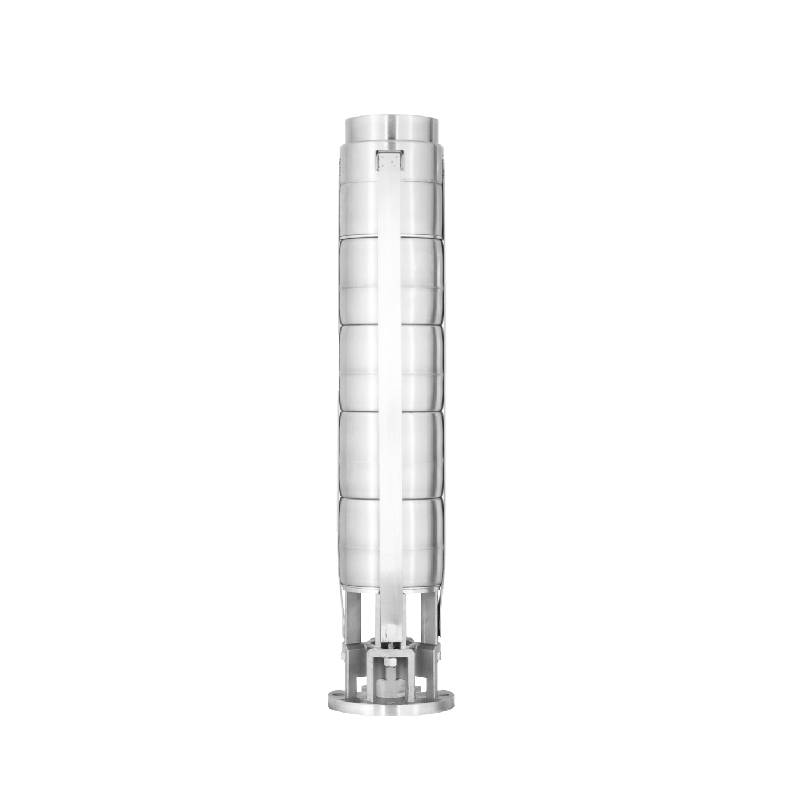Nov . 27, 2024 18:15 Back to list
Choosing the Right Submersible Pump for Your Water Needs
Submersible Pumps for Water An Overview
Submersible pumps are essential tools used in various applications such as agricultural irrigation, wastewater management, and groundwater extraction. These pumps are designed to operate while submerged in the fluid they are meant to pump, making them ideal for lifting water from wells, tanks, or other bodies of water. Their unique design offers several advantages over conventional pumps, such as improved efficiency, space-saving capabilities, and reduced noise levels.
How Submersible Pumps Work
A submersible pump consists of a pump motor and a pump body, which includes an impeller and diffuser. The motor, securely sealed in a waterproof housing, drives the impeller to create a low-pressure area at the inlet of the pump. Water from the surrounding environment enters through this low-pressure zone and is forced upward through the discharge pipe to the surface. The key feature of submersible pumps is that they are designed to work underwater, allowing them to push water to the surface rather than pulling it, which is the case with above-ground pumps.
Types of Submersible Pumps
There are several types of submersible pumps, each tailored for specific applications and conditions
1. Sewage and Wastewater Pumps These pumps are designed to handle large volumes of water mixed with solids such as sewage and debris. They are commonly used in municipal wastewater treatment plants and residential sewage systems.
2. Deep Well Pumps Ideal for extracting water from deep underground sources, these pumps have a long shaft that allows the pump to be placed deep within a well. They are efficient in supplying water for agricultural irrigation and domestic use.
3. Drainage Pumps Often used in construction sites or flood-prone areas, drainage pumps efficiently remove excess water from low-lying areas, preventing flooding and water damage.
4. Clean Water Pumps These pumps are used for applications that require the transfer of clean water, such as aquariums, fountains, and home water systems.
Advantages of Submersible Pumps
Submersible pumps offer several advantages that make them increasingly popular for water-related applications
submersible pump for water

1. Efficiency By being submerged in the liquid, these pumps can push water to the surface with minimal energy consumption. This efficient operation can lead to lower energy bills and reduced operational costs.
2. Space-Saving Design Since submersible pumps are housed underwater, they require less above-ground space compared to traditional pumps. This is particularly beneficial in areas where space is limited.
3. Reduced Noise Levels Because the pump is submerged, operational noise is significantly reduced, making them suitable for residential areas and sensitive environments.
4. Lower Risk of Cavitation Submersible pumps are less prone to cavitation—a phenomenon where vapor bubbles form in the liquid and collapse, potentially damaging the pump. Their design minimizes the chances of cavitation occurring.
Considerations for Choosing a Submersible Pump
When selecting a submersible pump, several factors should be considered
1. Head and Flow Rate Understanding the required lift (head) and flow rate is crucial. This information dictates the size and type of pump needed for specific applications.
2. Fluid Characteristics The type of fluid being pumped (clean water, sewage, or chemicals) will influence the choice of materials and design features.
3. Power Source Consider whether the pump will be powered by electricity or a generator, especially in remote areas where access to electrical outlets may be limited.
4. Durability and Maintenance Opt for pumps made with high-quality materials that can withstand harsh conditions. Regular maintenance is essential for ensuring longevity and efficiency.
Conclusion
Submersible pumps play a vital role in the management and distribution of water in various industries and applications. Their efficient operation, space-saving design, and versatility make them an excellent choice for many water pumping needs. Whether for residential, agricultural, or industrial use, understanding the various types and their applications can help users make informed decisions. With the right submersible pump, water management becomes a more efficient and hassle-free process.
-
Submersible Well Pumps Buying Guide
NewsMay.14,2025
-
Submersible Sump, Dirty Water, Borehole Pumps Demystified
NewsMay.14,2025
-
Stainless Steel Submersible Pumps Superior Performance
NewsMay.14,2025
-
High Flow Submersible Well Pumps Essential Features
NewsMay.14,2025
-
Choosing the Best Stainless Well Pump
NewsMay.14,2025
-
A Comparison of Submersible Pumps Filled with Water and Oil
NewsMay.14,2025
-
 Submersible Well Pumps Buying GuideReliable access to clean water is fundamental for residential, agricultural, and commercial operations, making the selection of an appropriate well pump system one of the most important infrastructure decisions.Detail
Submersible Well Pumps Buying GuideReliable access to clean water is fundamental for residential, agricultural, and commercial operations, making the selection of an appropriate well pump system one of the most important infrastructure decisions.Detail -
 Submersible Sump, Dirty Water, Borehole Pumps DemystifiedThe world of water management has undergone a technological revolution, with advanced pumping systems now offering unprecedented efficiency and reliability across diverse applications.Detail
Submersible Sump, Dirty Water, Borehole Pumps DemystifiedThe world of water management has undergone a technological revolution, with advanced pumping systems now offering unprecedented efficiency and reliability across diverse applications.Detail -
 Stainless Steel Submersible Pumps Superior PerformanceModern water extraction and fluid handling systems demand equipment capable of withstanding harsh environments while maintaining peak efficiency.Detail
Stainless Steel Submersible Pumps Superior PerformanceModern water extraction and fluid handling systems demand equipment capable of withstanding harsh environments while maintaining peak efficiency.Detail
